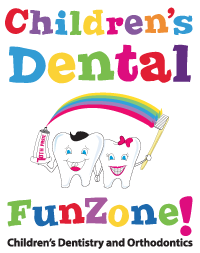Comprehensive Pediatric Dental and Orthodontic Care
Why Choose Children's Dental FunZone?
Choosing a dental clinic for your child is a big decision, and at Children's Dental FunZone, we make it easy. With over 23 years of experience in pediatric and orthodontic care, your child is in good hands. Our FREE consultations, emergency hours, and flexible scheduling options ensure you get care when you need it. We handle insurance paperwork for you, and our welcoming atmosphere makes dental visits enjoyable. Plus, with online booking and a referral program offering special bonuses, we make dental care convenient and rewarding.
Children's Dental FunZone is also a proud member of organizations like the American Academy of Pediatric Dentistry and the American Dental Association.
Book Now →
Preventative and Routine Care
Preventive care is key to a healthy smile. At Children's Dental FunZone, we make dental hygiene fun with regular check-ups, cleanings, and education that helps kids and parents keep cavities away and avoid more complex treatments later.
Learn More →
Restorative Dental Treatments
Even with great brushing habits, kids sometimes need extra care. Our gentle restorative treatments—like fillings, crowns, and bridges—use advanced technology to comfortably repair and protect teeth while preserving as much of the natural tooth as possible.
Learn More →
Braces and Aligners
Straightening teeth is now easier and more discreet than ever. With options like traditional braces and clear aligners, our orthodontists personalize treatment to ensure comfort, aesthetics, and a confident smile every step of the way.
Learn More →
Orthodontic Planning & Consultation
Early orthodontic evaluations help set the foundation for a lifetime of healthy smiles. Using tools like X-rays, we create personalized treatment plans and guide families through every step—whether it's braces or aligners—to ensure confident, beautiful results.
Learn More →
Emergency and Special Care
Dental emergencies can be stressful, but we're here to help with same-day care and walk-in appointments. Whether it's a toothache, broken tooth, or any other urgent issue, our experienced team provides prompt, effective treatment to alleviate pain and restore oral health. Special care is also available for children with unique needs, ensuring everyone gets the attention they deserve.
Learn More →
Here's what our satisfied patients are saying...
At Children's Dental FunZone, we take pride in providing exceptional pediatric dental care to our patients. We would be grateful if you could share your thoughts about our dental practice with others. Your feedback helps us improve and helps others make informed decisions. Please take a moment to leave a review of Children's Dental FunZone and let others know what you think.







Share On: